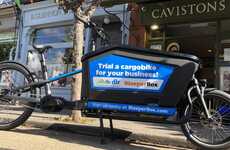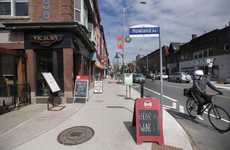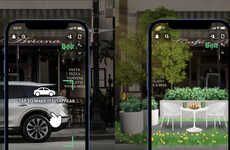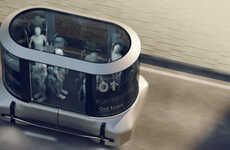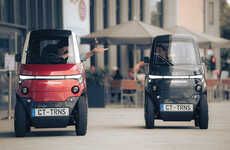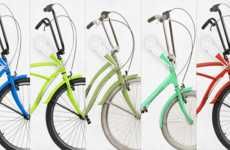
Dublin Proposes Getting Rid of Cars to Lessen Traffic Jams
Meghan Young — June 23, 2015 — Autos
References: dublincity.ie & fastcoexist
Dublin might become a revolutionary pedestrian-focused city thanks to a recent proposal by its city council. Ranking just under Los Angeles as the worst traffic in the world, the conditions are expected to only worsen over time as it squeezes 20% more commuters over the next decade. The solution? It envisions a pedestrian-focused city in which major streets become car-free zones that only service buses, bikes, pedestrians and a new tram line.
Although it still require public approval, the pedestrian-focused city plan is a promising one. Ciarán Cuffe, chair of the city council's transport committee, says, "Dublin won't become car-free tomorrow, but as we improve our light rail network there are fantastic opportunities to create car-free areas where you can breathe, think, and hear yourself speak. Dubliners are very receptive to this. The true test of a civilized city is whether you can let go your child's hand and allow them to explore the city by themselves. That is our ultimate goal."
Although it still require public approval, the pedestrian-focused city plan is a promising one. Ciarán Cuffe, chair of the city council's transport committee, says, "Dublin won't become car-free tomorrow, but as we improve our light rail network there are fantastic opportunities to create car-free areas where you can breathe, think, and hear yourself speak. Dubliners are very receptive to this. The true test of a civilized city is whether you can let go your child's hand and allow them to explore the city by themselves. That is our ultimate goal."
Trend Themes
1. Pedestrian-focused Cities - Creating car-free zones in major streets to prioritize pedestrians, buses, bikes, and trams presents an opportunity for disruptive innovation in urban planning and transportation.
2. Improved Light Rail Network - Investing in the expansion and improvement of light rail networks offers a disruptive innovation opportunity in public transportation, reducing the reliance on cars.
3. Public Approval for Car-free Areas - Engaging the public in the decision-making process and gaining approval for car-free areas within cities can lead to disruptive innovation in urban development and community-driven planning.
Industry Implications
1. Urban Planning - The implementation of pedestrian-focused city plans requires innovative approaches to urban planning, creating opportunities for disruptive innovation in this industry.
2. Transportation - Disruptive innovation can be explored within the transportation industry by developing new systems and infrastructure that prioritize pedestrian-friendly transportation options and reduce reliance on cars.
3. Public Engagement and Decision-making - Involving the public in decision-making processes regarding car-free zones and urban development presents an opportunity for disruptive innovation in public engagement and community-driven initiatives.
0.8
Score
Popularity
Activity
Freshness



